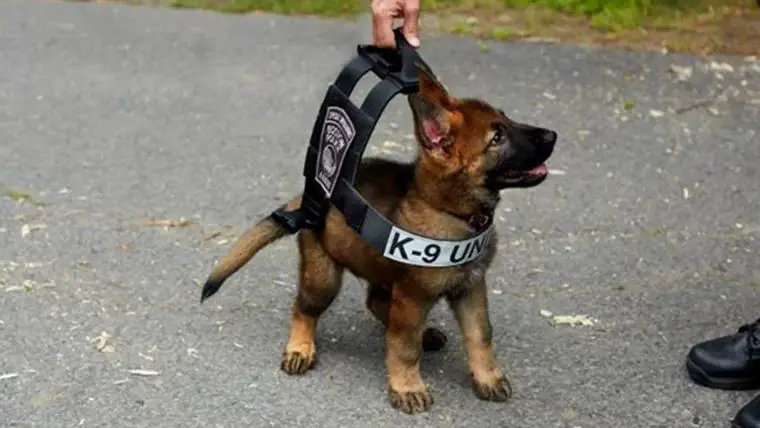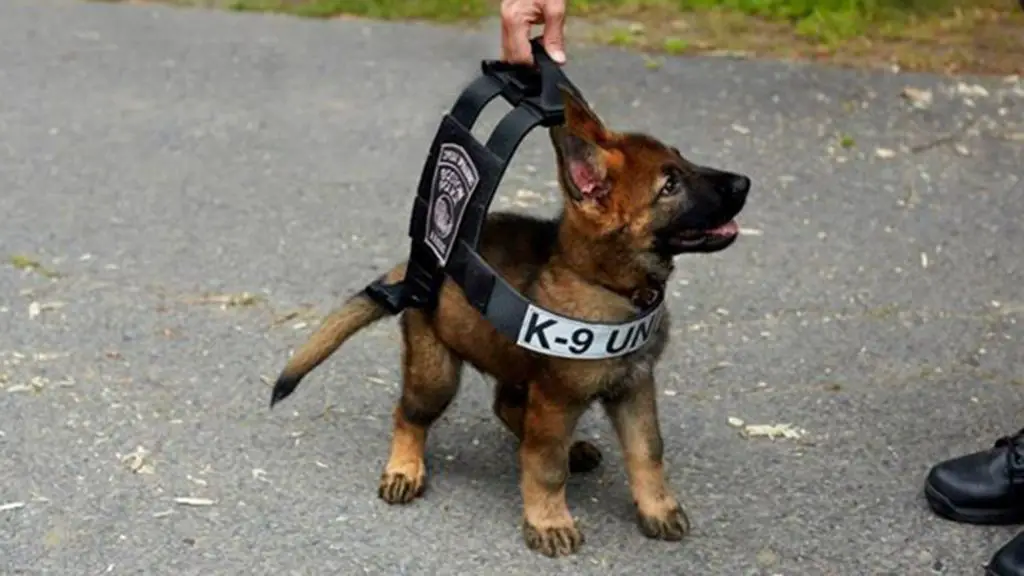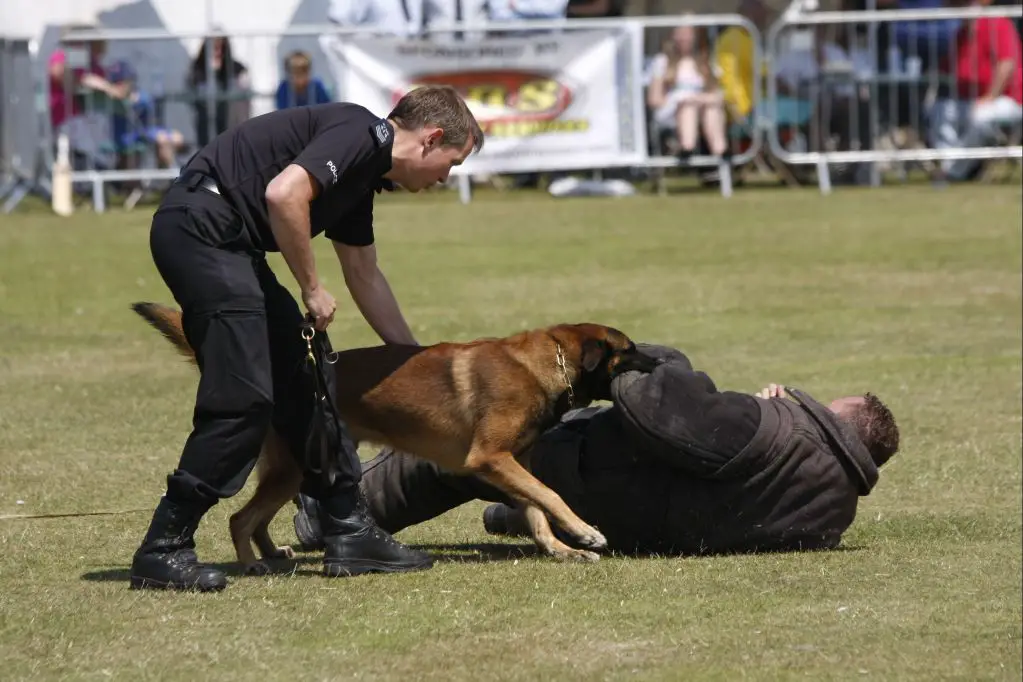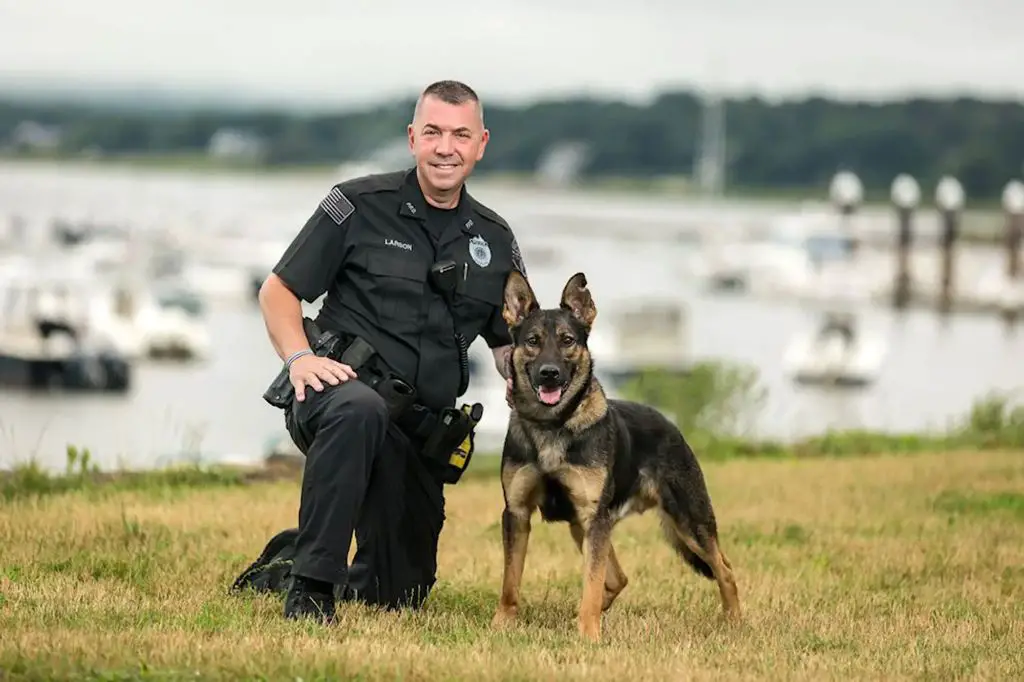Introduction
Police dogs have been used for law enforcement purposes for centuries to assist officers with tracking, apprehending suspects, searching crime scenes, and more. Today, police dogs continue to serve in specialized law enforcement roles to help enhance public safety and homeland security. This article will provide an overview of how police dogs are chosen, covering topics such as breed selection, acquisition, temperament testing, training and certification, typical roles and deployment, and retirement.
The information is sourced from educational resources including Wikipedia, Police Pushers and Kickers Association, and the National Law Enforcement Museum.
Breed Selection
When selecting breeds for police work, certain traits are prioritized. Police dogs need to have exceptional scenting abilities, high energy, trainability, courage, and patience (Source). The most common breeds used are German Shepherds, Belgian Malinois, Dutch Shepherds, and Labrador Retrievers (Source).

German Shepherds are one of the most popular police dog breeds due to their trainability, courage, work ethic, and sense of smell (Source). Their athletic build also makes them well-suited for police work. Belgian Malinois have emerged as a top choice in recent years due to their energetic and driven personalities along with their intelligence and scenting power (Source). Labrador Retrievers are often used for their detection abilities and friendly temperament.
Overall, successful police dogs require both the physical traits needed for the job as well as the right temperament and trainability to follow commands and work calmly under pressure.
Acquisition
Police dogs come from a variety of sources. Many police dogs are purchased from professional breeders and vendors that specifically breed and train dogs for police work. These vendors are often located in Europe, especially in Germany, the Netherlands, Belgium, and Czech Republic where there is a long tradition of breeding dogs like German Shepherds and Belgian Malinois to be working dogs (https://germanshepherdshop.com/blogs/list/where-do-police-k9s-come-from).
Since specialized breeders and vendors can be expensive, some police dogs are donated to police departments by citizens. However, most police departments prefer to source their dogs from professional organizations since they want to ensure the dogs have the proper temperament and abilities for police work (https://www.nationalpolicedogfoundation.org/faq).
Some police dogs are also rescued from shelters and then trained to be police dogs. Rescue dogs can make excellent police dogs with the right temperament and training. However, most police departments get their dogs from breeders or vendors since they want dogs specifically bred for the physical and mental demands of police work.

Temperament Testing
There are several standardized tests used to evaluate a dog’s temperament and suitability for police work. According to the Association of Professional Dog Trainers, the most common are the ATTs Temperament Test and customized tests developed by police dog training organizations.
The ATTS Temperament Test assesses traits like stability, shyness, aggressiveness, and friendliness. Dogs are exposed to stimuli like loud noises, jogging strangers, and hidden strangers to evaluate their response. According to the ATTS, suitable police dogs will show assertiveness but no unwarranted aggression, wariness but not shyness, and confidence without extreme excitability.
Customized police dog temperament tests also evaluate key traits like courage, hunt drive, willingness to out or release on command, and ability to control aggression. For example, the Leerburg K9 test uses exercises like stake out, hidden agitator, and walk by aggression. Suitable police dogs will show courage and appropriate aggression towards threats, but control those behaviors on command.

Training
Police dogs go through extensive training to prepare them for their duties. According to Police K9 Training, police dogs receive specialized training for 12-16 weeks. The training focuses on teaching obedience, agility, scent detection, search skills, and apprehension.
Obedience training is essential so the dog follows commands during high stakes situations. Agility training enhances the dog’s physical abilities to jump, climb, and move through obstacles. Scent detection prepares dogs to sniff out drugs, bombs, bodies, and other scents. Search training allows dogs to methodically check areas for suspects or missing persons. Apprehension skills enable the dog to chase, hold, and control suspects when needed.
According to How are Police Dogs Trained 2022, training typically starts with basic obedience, then moves to more complex tasks. The dogs are rewarded with toys and praise for exhibiting the right behaviors. The training is extensive and prepares the dogs for the rigors of police work.
Certification
For a police dog to be deployed in the field, it must go through a rigorous certification process to ensure it can perform its duties properly. The main organizations that handle police dog certification in the United States are the National Narcotic Detector Dog Association (NNDDA), American Police Canine Association (APCA), and United States Police Canine Association (USPCA).
The certification tests evaluate the dog’s obedience, criminal apprehension, area and building search, and scent detection abilities. According to the NNDDA, the police service dog certification consists of a temperament test, obedience test, criminal apprehension test, and area search test (NNDDA). The APCA has similar criteria, evaluating each police dog team in phases relevant to police work (APCA).
To pass certification, the police dog must display strict obedience and control, proficiency in scent detection, ability to locate suspects and contraband, and solid performance across all required tests. The certification must be renewed on a regular basis, often annually, to ensure the police dog team remains capable and up-to-date on techniques.

Roles
Police dogs have several main roles they are trained for, including:
- Tracking – Using their powerful sense of smell, police dogs can track suspects or lost people by following their scent trail. This allows police to locate criminals or find missing persons. [1]
- Apprehending suspects – Police dogs are trained to chase down and bite dangerous suspects, holding them until police can arrest the perpetrator. Their intimidating presence helps apprehend resisting suspects. [2]
- Detecting drugs and explosives – Using their sensitive noses, police dogs can sniff out illegal drugs or explosive materials. This helps officers locate contraband and hazardous items. [2]
- Search and rescue – Police dogs can search for missing persons or disaster victims. Their tracking skills and endurance aids in locating and rescuing people in need.
These main roles allow police K-9s to assist law enforcement in critical operations like pursuits, detections, and investigations.
Deployment
Police dogs work closely with their human handlers while on duty, patrolling areas or responding to calls. The handler is responsible for deciding when and how to deploy the dog during police operations (Tactical Considerations for K9 Deployments).
Common situations where a police dog may be utilized include building searches, tracking suspects, locating missing persons, crowd control, and detecting illegal substances. The handler evaluates each scenario and determines whether deploying the dog is the appropriate course of action (CANINE OPERATIONS AND DEPLOYMENT GUIDELINES).
During deployments, the handler maintains close communication with the dog through vocal commands and a leash. The dog is expected to follow the handler’s directives to search, apprehend or restrain suspects. Handlers must maintain control of the dog and quickly intervene if the dog shows excessive aggression (Tactical Considerations for K9 Deployments).
With proper training and handling, police dogs serve as valuable assets in the field. Their acute senses and abilities can safely resolve dangerous situations beyond human capabilities alone.
Retirement
Police dogs generally retire and are adopted out to their handlers or new families when they reach 8-10 years old, which is the average working life span for a police dog. When a police dog retires, it is usually because they have slowed down, experienced injuries, or can no longer perform at the same physical level as active duty police dogs.
Retired police dogs go through an adoption process where they are evaluated for temperament and health to ensure they are suitable pets for families. Most retired police dogs transition very well into family life after their working careers, although they still require owners who can provide structure, activity, and stimulation.
Police dog handlers are often given the first chance to adopt their retired K9 partners to allow the bond and companionship between them to continue. This provides both the handler and dog with closure and the comfort of staying together in retirement.
If a handler is unable to adopt their retired police dog, the K9 will be evaluated for adoption by other families. Priority is given to families of police officers and military veterans who are familiar with working dogs. The adoption process aims to find the best possible home where the retired working dog can live out its senior years in comfort as a beloved family pet.
Conclusion
Police dogs play a vital role in law enforcement. Their exceptional senses, intelligence, work ethic, and bond with their handler makes them an invaluable asset. The process of selecting, acquiring, training and deploying police dogs is complex and highlights their unique capabilities.
Breed selection focuses on working breeds like German Shepherds and Belgian Malinois that have strong scenting ability, trainability, courage, and physical stamina. Temperament tests assess drive, confidence, and sociability to identify candidates likely to excel. Rigorous obedience and scenario-based training develops strong control and teaches specific skills from tracking to suspect apprehension.
Ultimately, it is the close relationship and trust between handler and dog that enables successful performance. Their selective breeding and extensive preparation equips police dogs to serve and protect while assisting law enforcement in keeping communities safe.
